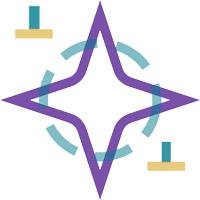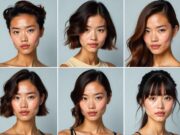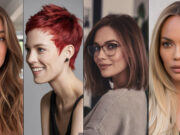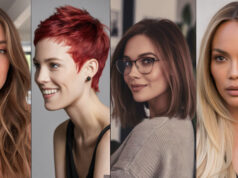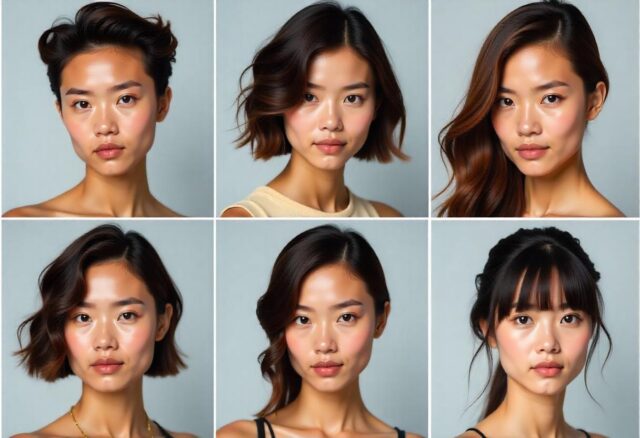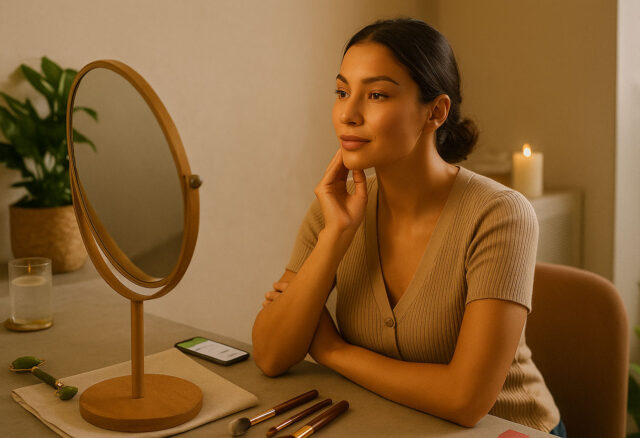Diamond Face Shape Glasses: Top Frames & Sunnies
If you’ve got a diamond face shape, your cheekbones are the star of the show—wider than your forehead or chin, sitting almost under your eyes, with a chin that tapers just so. That sharp bone structure? It’s gorgeous, but finding the right pair can feel like threading a needle. The good news is, the right frames will soften those angles, balance everything out, and really let your best features take center stage.
In this guide, I’ll show you how to figure out if your face really is a diamond shape, point you toward styles that’ll feel like they were made just for you, and even walk you through measuring at home. No head-scratching jargon here—just the kind of tips you’d share over a casual catch-up. Ready to discover your new favorite specs?
What’s a Diamond Face Shape?
Think of a diamond, with cheekbones as the widest point, and a slightly narrower forehead and jawline. Those high cheekbones sit nearly under your eyes, and your chin gently tapers to a soft point. It’s a look celebrities like Megan Fox, Rihanna, and Johnny Depp wear effortlessly—and soon, you will too.
Why does this matter? Because frames that mirror your angles can feel harsh. You want styles that soften and balance. Think about it like choosing the right plant for a windowsill: some need shade, some need sun. If you match the frame’s shape to your face’s needs, everything just clicks.
People with diamond faces often wonder why a bold cat-eye feels too sharp or a round frame looks extra small. It’s all about proportion. Frames that add width at the forehead or jaw help even out your cheekbones. And avoiding styles that draw attention to your most angular parts keeps the look soft.
By knowing your shape, you’ll stop guessing and start styling with confidence. No more settling for “just okay” specs—let’s find the pair that makes you grin every time you catch your reflection.
Top Frame Styles for Diamond Faces
1. Cat-Eye Frames
Cat-eye glasses lift your features. The upswept corners draw the eye upward, softening those high cheekbones. They add a playful, vintage vibe that balances your narrow forehead and chin. Choose a moderate flare—too extreme, and it crowds your temples; too subtle, and you lose the lift. A medium-size frame works best. Think tortoise shell or a soft pastel hue for a friendly pop of color. To style at home, hold the frames up and angle them so the outer top corner sits just above your brow bone.

2. Oval & Round Frames
Soft curves can counter sharp angles. Oval or round frames add gentle lines that sit below your cheekbones, preventing extra bulk on your cheeks. These shapes work as a nice contrast to your angular features. Go for a slightly wider bridge to open up your forehead area. Thin metal rims in gold or rose gold give a delicate finish, while thicker acetate in muted tones offers a bolder look. When you try them on, make sure the bottom edge of the lens doesn’t brush against your cheeks—that keeps the focus on the frame’s curve, not your cheekbones.

3. Browline & Horn-Rim
Browline and horn-rim frames have thicker edges at the top. They add visual weight above your cheekbones, balancing the narrow forehead. This style is retro cool and works for both men and women. Look for frames where the browline sits just at or slightly above your natural brow. Too high feels disconnected; too low loses the lift. Darker colors up top—like black, navy, or dark tortoise—anchor the look. The lighter, thinner bottom rim keeps the frame from feeling too heavy. Try them on by checking that the top of the frame aligns with your eyebrows without hiding them.

4. Rimless & Semi-Rimless
Minimalism can be a game-changer. Rimless or semi-rimless frames let your cheekbones shine without adding bulk. They create an almost “invisible” look that highlights your natural angles. For diamond faces, choose designs where the temples attach slightly above the center of the lens. This placement lifts the eyes and softens the cheekbones. Semi-rimless styles with a top bar provide a hint of structure without overwhelming your face. Look for clear or light-tinted lenses to keep the effect airy. When fitting, ensure the frame sits close to your skin at the temples for a seamless, barely-there vibe.

5. Sport & Goggles
Even sport goggles can flatter a diamond face. Seek shield styles that curve along your cheekbones rather than resting directly on them. Wraparound frames in oval or rounded-rectangle shapes maintain balance. Avoid rigid, boxy goggles—they press on your cheeks and highlight your angles. Tinted or mirrored lenses add a futuristic twist while keeping the look soft. Adjustable nose bridges help customize the fit—raise them to lift the goggles above your cheekbones if needed. For outdoor activities, pick frames with flexible temples and rubberized nose pads; they grip without digging into your skin.

That’s the first half of our guide! Say Continue to dive into women’s and men’s picks, sunglasses, color tips, measuring tricks, FAQs, and a final friendly tip.
Glasses for Diamond Face – Women
For women, playful and chic frames rule the day:
1. Soft Cat-Eye
Choose a gentle upsweep at the temples—nothing too sharp. A translucent pink or warm tortoise shell keeps it feminine. Pair with loose waves for a balanced, soft look.

2. Subtle Oval
Go for a slightly wider-than-usual oval. It tucks just below your cheekbones, so those angles don’t feel too pronounced. Thin, gold metal frames add an elegant touch without overpowering.

3. Bold Browline
A thick top rim in matte navy or deep burgundy anchors your look. The contrast lifts your forehead and draws the eye upward. Match with a low ponytail to show off the frame’s structure.

4. Delicate Rimless
When you want the frames to vanish, rimless works wonders. Clear nose pads and ultra-thin temples create a floating effect. It’s minimal and lets your bone structure take center stage.
Glasses for Diamond Face – Men
Men’s frames lean on classic shapes with a modern twist:
1. Rectangular Acetate
A soft-angled rectangle in matte black or dark tortoise balances your cheekbones. The straight top line sits right under the brow, giving structure without digging in.

2. Aviators
Traditional teardrop aviators add width at the forehead and soften the cheeks. Look for frames with a double bridge to distribute attention evenly.

3. Metal Browline
Steel or gunmetal browline frames give a subtle contrast above your cheekbones. The thinner bottom rim keeps the look light. Great for smart-casual style.

4. Semi-Rimless Rectangle
A semi-rimless design in brushed silver or gunmetal sits lightly on your face. The top bar lifts the eye area while the lack of a bottom rim keeps it from feeling bulky.

Sunglasses & Specs for Diamond Faces
Switching to sunnies? Keep the same rules:
- Oval Sunnies: Softens angles and adds horizontal balance.
- Rounded Rectangle Shields: Wrap slightly around your face, following cheekbone curves.
- Mirrored Aviators: Reflect glare and accentuate bone structure.
- Goggles with Curved Lines: For sports, choose goggles whose top bar mirrors your browline.
Avoid square shades that sit right on your cheekbones—they amplify sharpness. Aim for styles that hover just above your cheek area.
Other Popular posts you might like
- From Filter to Fitting Room: The Virtual Try-On Revolution
- How Generative AI Is Revolutionizing Beauty Tech – Trends, ROI & Real-World Cases
- How to Change Your Face Shape: Natural, Medical & Styling Hacks
- Top Haircuts to Balance Small Face Shapes
- Diamond Face Shape Glasses: Top Frames & Sunnies
Color, Material & Lens Tips for Diamond face shape glasses
Tiny tweaks make a big difference:
- Frame Colors: Warm tortoises, soft pastels, and metallic rose gold complement skin tones and soften angles. Dark hues on top rim work best.
- Materials: Acetate offers rich color depth; metal adds a sleek, modern vibe. Rimless feels light and airy.
- Lens Coatings: Anti-reflective lenses keep your eyes visible in photos. Blue-light filters guard screen time. Polarized lenses cut glare outdoors.
- Temple Tips: Choose spring hinges or flexible temples for comfort around high cheekbones.
Mix and match: a metal browline with acetate temple tips can add personality without clashing.
How to Try & Measure Glasses at Home
No need for in-store stress:
- Measure Your Face: Use a soft tape—record temple-to-temple across cheekbones, brow width, and bridge length.
- Print a Frame Guide: Many online shops offer printable templates. Cut out shapes and hold them up to your face in a mirror.
- Virtual Try-On Apps: Warby Parker, Zenni, and GlassesUSA apps use your smartphone camera to show frames in real time.
- DIY Selfie Test: Snap a front-facing photo wearing different pairs. Compare side by side. The ones that make you smile win.
- Check Fit Points: Ensure temples rest gently on your browbone and don’t press on cheeks. Nose pads should sit comfortably without sliding.
Frequently Asked Questions
Yes—if they sit above your cheekbones. Oversized cat-eyes or big rounds can work, but avoid having the bottom edge touch your cheeks.
They’re perfect for highlighting your bone structure. Add tinted lenses or colored temple tips for a pop of personality.
Not really. Thin or flexible frames often provide enough contrast. Marker lines can distract from your natural features.
Oval and rounded rectangles are winners. They balance angles without adding bulk where it’s not wanted.
Absolutely. A metal bridge with acetate rims combines lightness and color. Just pick complementary tones—silver with cool shades, gold with warm.
Final Tip
Before your next specs shopping spree, grab your phone and take a quick selfie in natural light—no filters. Hold up three frame styles you love and compare which one makes your eyes pop and your mood lift. Use that as your personal style compass.
Remember, your face is the star; frames are the sidekick. Get the right match, and you’ll walk out feeling like you’re wearing your best confidence outfit. You’ve got this.
